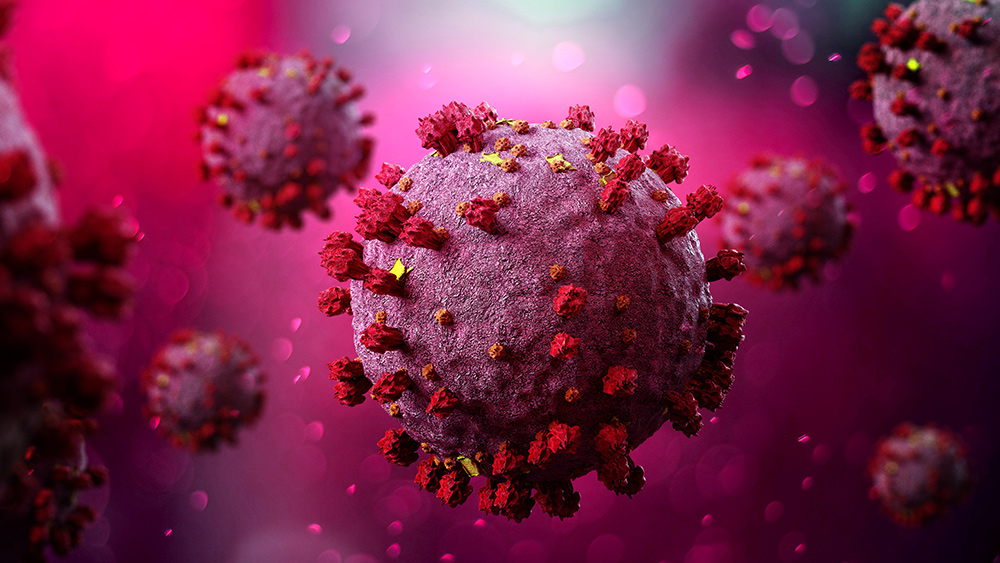Federal court says EPA must ban pesticide linked to brain damage in children
05/28/2021 / By Divina Ramirez

Children may soon be spared from a toxic pesticide that has been linked to brain damage. On April 29, the 9th United States Circuit Court of Appeals ruled that the Environmental Protection Agency (EPA) must ban all uses of chlorpyrifos on food or establish new residue levels for the insecticide that are safe for children.
The decision comes after more than a decade of pressuring the agency to address chlorpyrifos’s neurotoxic effects on children and farmworkers.
In 2019, health and labor groups represented by the nonprofit law organization Earthjustice filed a lawsuit against the EPA after it put off any decision to end or limit the use of chlorpyrifos. This pesticide is considered moderately hazardous to humans by the World Health Organization (WHO) because of its acute toxicity.
The federal appeals court’s decision is a huge victory for farming communities across the U.S. that may finally be spared by needless poisonings, neurological conditions and developmental disorders.
“The Court got it right: EPA’s time is now up,” said Patti Goldman, vice president for litigation at Earthjustice. The EPA must now follow the law and ban chlorpyrifos to protect children and farmworkers. It would be unconscionable for the agency to continue exposing children to chlorpyrifos any longer, added Goldman.
However, chlorpyrifos is only one of many organophosphate pesticides being used across the U.S. While the recent decision is a decisive win, the fight isn’t over yet. Earthjustice is now urging the agency to ban the use of all organophosphate pesticides on food to protect public health.

The EPA is currently reviewing the safety of organophosphate pesticides. It is expected to complete the review in 2022.
Federal court gives EPA deadline to ban toxic pesticide
The EPA first proposed banning the use of chlorpyrifos on food in 2016 in response to a 2007 petition filed by environmental groups.
However, the EPA reversed that decision in 2017 after Dow Chemical Company, the corporation that patented chlorpyrifos in 1966, filed a petition to reject the proposal to ban the organophosphate pesticide. Environmental and labor groups have challenged the EPA ever since.
The federal appeals court’s ruling in the latest case could finally put an end to the debate over the safety of chlorpyrifos.
In an email, EPA Spokesperson Ken Labbe said the EPA was reviewing the decision as it weighs its options, stressing that the agency is committed to ensuring the safety of pesticides and other chemicals.
Labbe also said the EPA is committed to protecting farmworkers and their families while still ensuring that pesticides are used safely nationwide.
Toxic pesticide has been linked to brain damage
Chlorpyrifos is a dangerous pesticide widely used in the U.S. on staple food crops, such as corn, wheat, soy, apple, citrus and more. It is also used in recreational spaces like parks.
Chlorpyrifos belongs to a class of pesticides called organophosphates, which were developed as a nerve gas by Nazi Germany. Since World War II, organophosphates like chlorpyrifos were repurposed for agriculture.
Chlorpyrifos can enter the body by drinking contaminated drinking water and consuming contaminated fruits and vegetables. Farmworkers who use the pesticide or people who simply enter fields where it has been sprayed are particularly at risk of suffering adverse health effects associated with chlorpyrifos exposure.
Decades of studies have linked the pesticide to serious adverse effects, such as brain damage in children, lower intelligence quotient (IQ), developmental disorders and autism. (Related: Landmark study describes the link between pesticide levels in expectant mothers and autism risk in their infants.)
In one study, researchers from the University of California, Los Angeles found that children exposed to chlorpyrifos and other organophosphates while in the womb had a moderately increased risk of developing autism spectrum disorder, a complex developmental disorder that affects communication and behavior.
Learn more about the adverse health effects of pesticide exposure at Pesticides.news.
Sources include:
Tagged Under: autism, brain damage, brain health, chemicals, children's health, Chlorpyrifos, clean food watch, environment, EPA, organophosphates, research





















